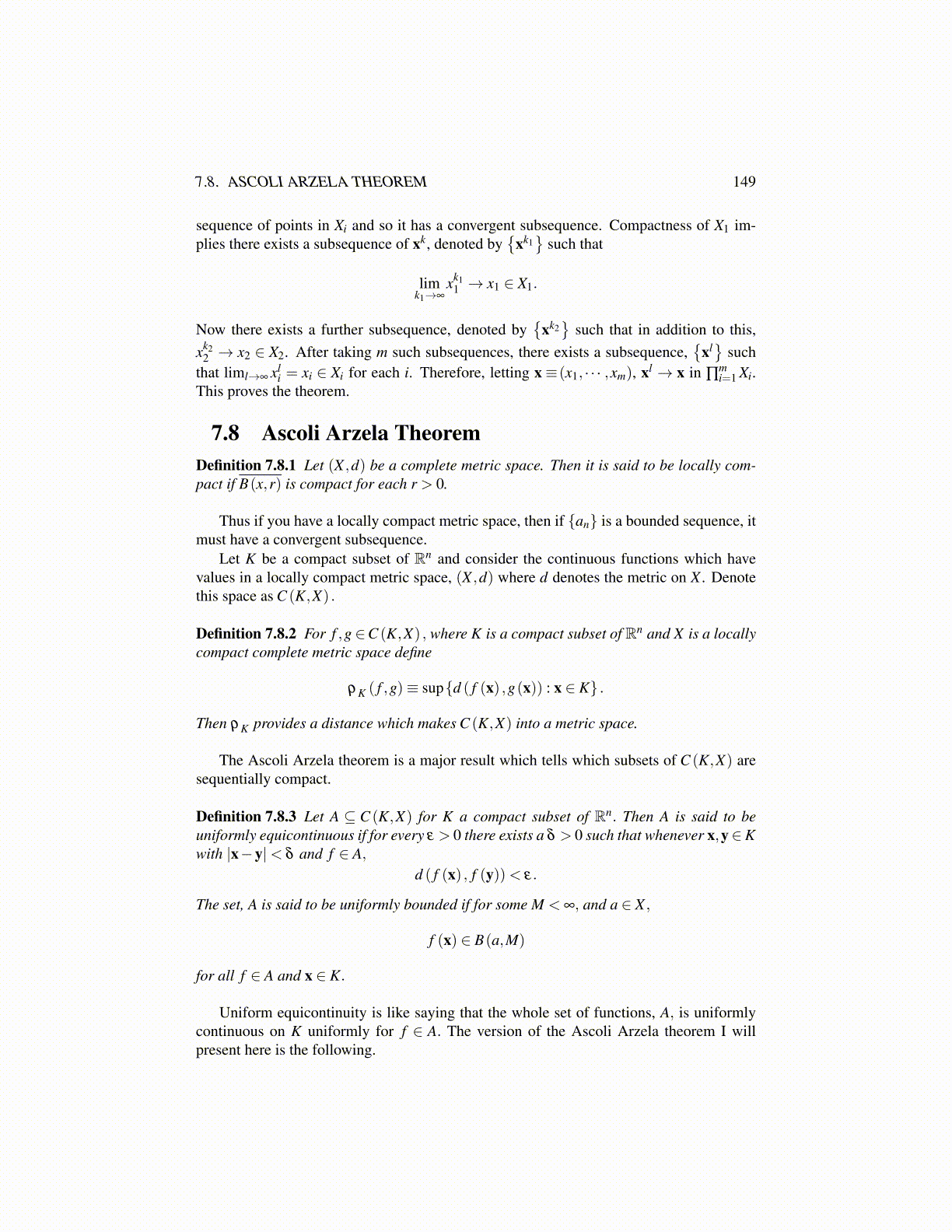
7.8. ASCOLI ARZELA THEOREM 149
sequence of points in Xi and so it has a convergent subsequence. Compactness of X1 im-plies there exists a subsequence of xk, denoted by
{xk1}
such that
limk1→∞
xk11 → x1 ∈ X1.
Now there exists a further subsequence, denoted by{
xk2}
such that in addition to this,xk2
2 → x2 ∈ X2. After taking m such subsequences, there exists a subsequence,{
xl}
suchthat liml→∞ xl
i = xi ∈ Xi for each i. Therefore, letting x≡(x1, · · · ,xm), xl → x in ∏mi=1 Xi.
This proves the theorem.
7.8 Ascoli Arzela TheoremDefinition 7.8.1 Let (X ,d) be a complete metric space. Then it is said to be locally com-pact if B(x,r) is compact for each r > 0.
Thus if you have a locally compact metric space, then if {an} is a bounded sequence, itmust have a convergent subsequence.
Let K be a compact subset of Rn and consider the continuous functions which havevalues in a locally compact metric space, (X ,d) where d denotes the metric on X . Denotethis space as C (K,X) .
Definition 7.8.2 For f ,g ∈C (K,X) , where K is a compact subset of Rn and X is a locallycompact complete metric space define
ρK ( f ,g)≡ sup{d ( f (x) ,g(x)) : x ∈ K} .
Then ρK provides a distance which makes C (K,X) into a metric space.
The Ascoli Arzela theorem is a major result which tells which subsets of C (K,X) aresequentially compact.
Definition 7.8.3 Let A ⊆ C (K,X) for K a compact subset of Rn. Then A is said to beuniformly equicontinuous if for every ε > 0 there exists a δ > 0 such that whenever x,y∈Kwith |x−y|< δ and f ∈ A,
d ( f (x) , f (y))< ε.
The set, A is said to be uniformly bounded if for some M < ∞, and a ∈ X ,
f (x) ∈ B(a,M)
for all f ∈ A and x ∈ K.
Uniform equicontinuity is like saying that the whole set of functions, A, is uniformlycontinuous on K uniformly for f ∈ A. The version of the Ascoli Arzela theorem I willpresent here is the following.